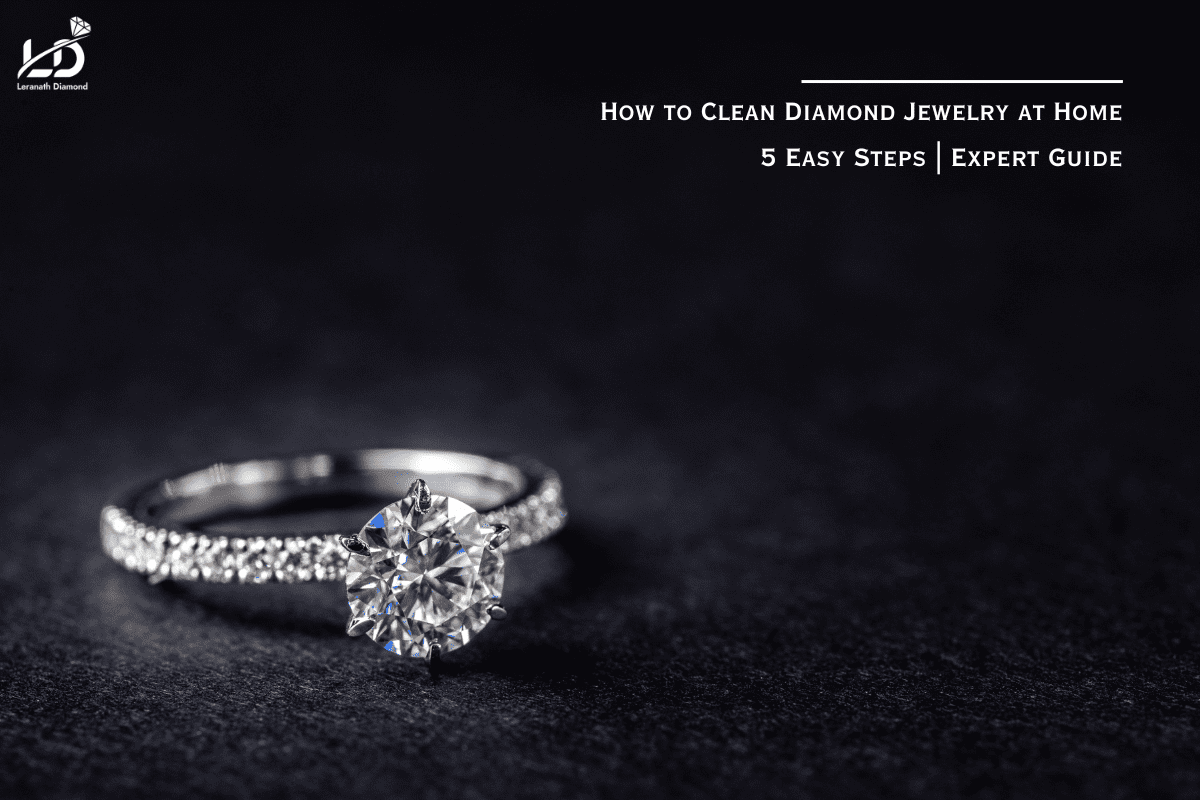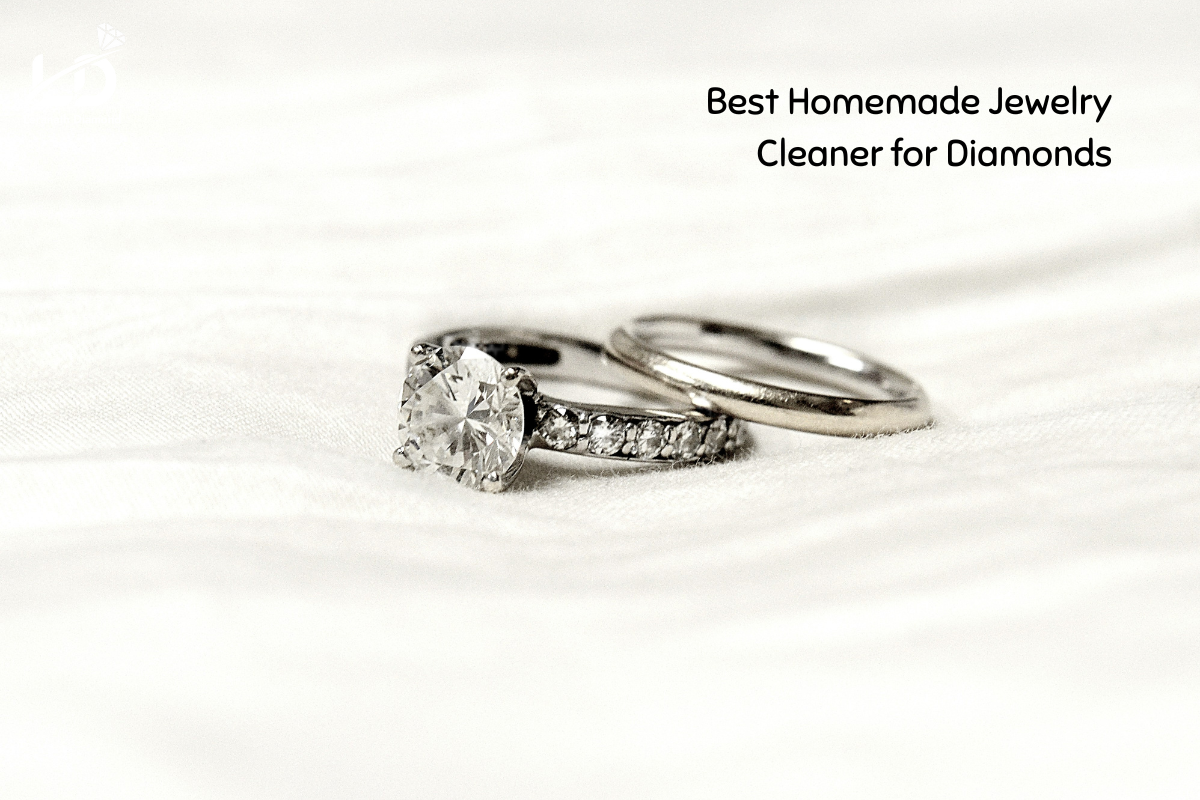How to Clean Diamond Jewelry at Home | 5 Easy Steps | Expert Guide
Diamonds in jewelry deserve to glisten just as brilliantly as on the day one first donned it. You lose the very shine of a diamond through everyday oils, lotions, dust, and more. The positive side? There is no reason for one to spend money on cleaning solutions or to make that extra trip to the jeweler to regain the natural shine of his diamonds. Instead, a few household items and a matter of five steps could do it for you in the safe environment of your home.
Why Regular Cleaning Matters
While diamonds do rank high as far as durability is concerned, they do attract grease and dirt to an extent. The natural oils emanating from your skin, for instance, may form a thin greasy layer on the surface, inhibiting the stone's ability to reflect light. Therefore, regular cleaning would ensure the brilliance of your jewelry as well as provide you time to inspect their settings to see if your diamonds are still secure.
What You'll Need
Before we dive into the cleaning process, gather these simple supplies:
A small bowl
Warm water (not hot)
Mild dish soap (avoid harsh chemicals or antibacterial varieties)
A soft-bristled toothbrush (designate one specifically for jewelry)
A lint-free cloth or microfiber towel
Optional: a small strainer to prevent pieces from going down the drain
The 5-Step Cleaning Process
Step 1: Create Your Cleaning Solution
In a small bowl, place warm water and two or three drops of mild dish soap. The water must feel comfortably warm, never hot to the touch, since high temperatures may cause setting damage or stone loosening depending on the type of metals used for the piece. Swirl the water just a bit so that the soap dissolves into a thin soapy mixture. It is this simple soap solution that breaks down the oils, dirt, and grime without harming your fine jewelry.
Step 2: Soak Your Diamond Jewelry
Drop the diamond pieces into the warm soapy water. Let them soak for about 20 to 40 minutes. The soaking time allows the solution to do its magic by loosening dirt, oils, grease, or residues that might be hard to reach. For really grimy jewelry, feel free to soak for a little longer, just never overnight.
Step 3: Gently Scrub with a Soft Brush
After soaking, take your soft-bristled toothbrush and gently scrub each piece. Pay special attention to the back of the diamond where oils tend to accumulate, as well as underneath the setting where dirt commonly hides. Use small, circular motions and be gentle around prongs and delicate settings. The soft bristles will dislodge debris without scratching the metal or stone. Don't forget to clean the band or chain as well.
Step 4: Rinse Thoroughly
After soaking for a while and almost soaking all the dirt away, take the soft-bristle toothbrush and gently scrub every piece. Concentrate the scrubbing on the back side of the diamond because that's where oil and grease play hide and seek, especially under the setting. Use small, circular motions on these areas, and be extra careful around prongs and delicate settings. The soft toothbrush bristles will help dislodge any additional dirt without scratching the metal or stone. Once you've cleaned the diamonds, don't forget to brush the band or chain as well.
Step 5: Dry and Polish
Gently pat your jewelry dry with a lint-free cloth or microfiber towel. Avoid using paper towels or tissues, as these can scratch softer metals or leave behind fibers. Once the piece is mostly dry, use a clean section of the cloth to gently buff the diamond and metal, bringing out their natural shine. Allow the jewelry to air dry completely before storing or wearing it.
Important Tips and Precautions
Avoid harsh chemicals. Never use bleach, chlorine, acetone, or abrasive cleaners on your diamond jewelry. These substances can damage the metal settings and potentially discolor certain metals.
Be cautious with certain pieces. If your diamond jewelry features other gemstones like pearls, opals, or emeralds, this cleaning method may not be suitable for them. These softer stones require different care approaches.
Check your settings regularly. Each time you clean your jewelry, take a moment to inspect the settings. Gently try to wiggle the diamond with your fingernail. If it moves at all, take the piece to a professional jeweler for tightening.
Know when to seek professional help. While at-home cleaning works wonderfully for routine maintenance, professional jewelers have ultrasonic cleaners and steam cleaners that can tackle stubborn buildup. Consider having your pieces professionally cleaned once or twice a year.
How Often Should You Clean Diamond Jewelry?
The frequency of cleaning depends on how often you wear your pieces. For everyday items like engagement rings, a thorough cleaning every two weeks is ideal. For special occasion pieces worn less frequently, cleaning them before wearing and after removing them should suffice.
The Final Shine
With these five straightforward steps, your diamond jewelry will maintain its captivating sparkle for years to come. Regular at-home cleaning is a simple act of care that protects your investment and keeps your precious pieces looking their absolute best. The entire process takes less than an hour and requires nothing more than items you likely already have in your home.
Remember, the key to beautiful diamond jewelry isn't just the quality of the stones themselves but the consistent care you provide. Now that you know how easy it is to clean your diamonds at home, there's no reason not to keep them shining brilliantly every single day.


